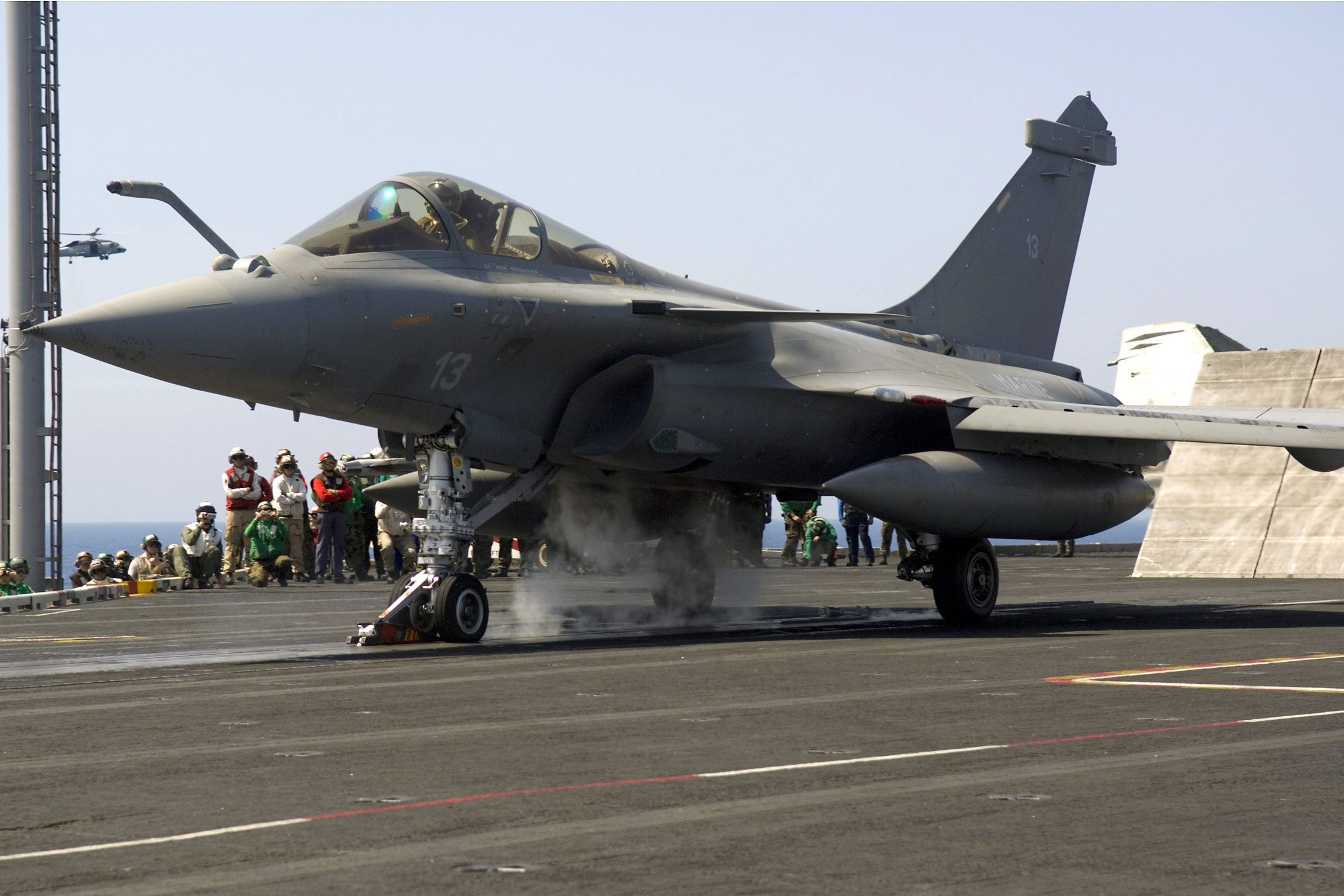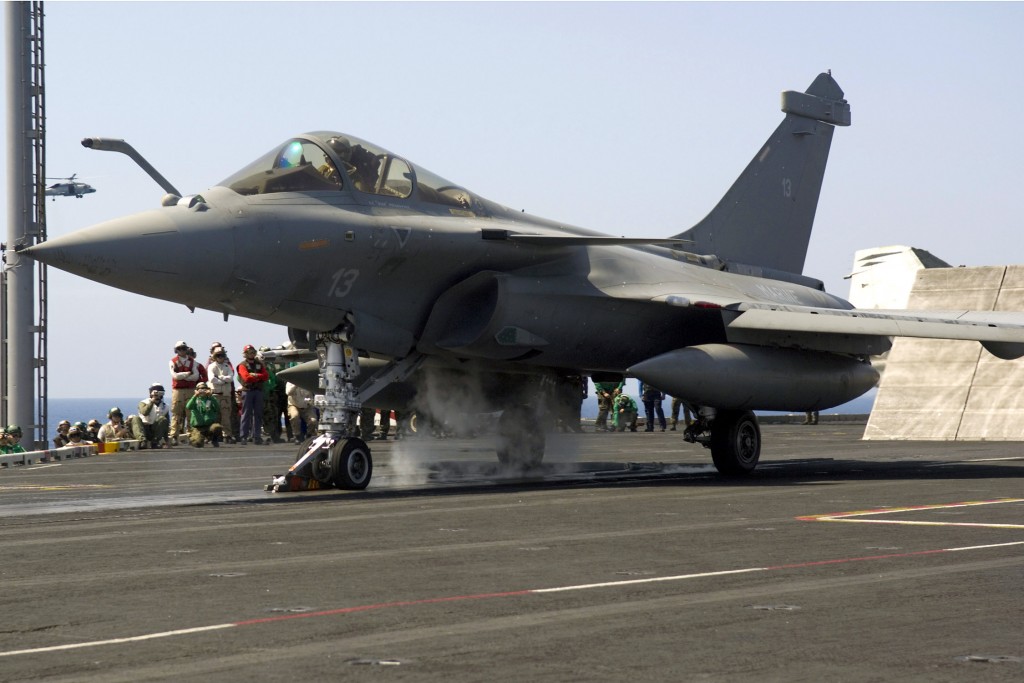From February to April 2015, French Navy’s Rafale M F3 omnirole combat aircraft, equipped with the brand-new RBE2 Active Electronically-Scanned Array (AESA) radar and assigned to the 11th Fleet Air Squadron (Flotille 11F), operated in the Arabian Gulf from the Charles de Gaulle nuclear-powered aircraft carrier.
Tasked for Close Air Support (CAS) missions and Intelligence, Surveillance and Reconnaissance (ISR) missions to the benefit of Operation Inherent Resolve (OIR) over Iraq, the French Navy pilots had the opportunity to assess the cutting-edge capabilities of the Rafale’s RBE2 “AESA” radar in a very demanding environment.
The RBE2 “AESA” radar’s extended range capabilities supporting low-observable target detection tremendously enhance the situational awareness during the ISR missions performed over the battlefield. Indeed, many UAVs or unknown flights were detected and reported by the “Rafale-RBE2 ‘AESA’” duo.
Reliable and resistant to jamming, the AESA radar brought confidence and efficiency to the pilots, a key to success in these complex missions.
• Rafale is the only European combat aircraft in operational service to incorporate today the cutting-edge “AESA” radar technology.
• Export versions of the Rafale also incorporate the AESA radar technology.
• The RBE2 “AESA”, developed and produced by Thales, brings the Rafale a number of key operational benefits:
— extended range capabilities supporting low-observable target detection and full use of the capabilities of new weapon systems such as the Meteor air-to-air missile;
— higher reliability for reduced maintenance and lower through-life support costs;
— greater waveform agility for SAR (Synthetic Aperture Radar) imaging and improved resistance to jamming.
• For example, thanks to the extended range capability of its RBE2 “AESA” radar, the Rafale equipped with the Meteor long-range air-to-air missile (BVRAAM) will be able, from 2018, to intercept targets at very long range, while the currently used MICA (RF/IR) missile will complement this impressive air-to-air capability, both for combat interception and self-defence.
On April 28, 2015, teams from the French Ministry of Defence,Dassault Aviation and MBDA successfully carried out the first guided firing of the Meteor BVRAAM against an air target from a Rafale.
• In October 2012, the French defence procurement agency (DGA: Direction Générale de l’Armement) officially took delivery of the Rafale “C137” (a single-seater aircraft for the French Air Force), the first production Rafale equipped with the Thales RBE2 “AESA” radar.
• On September 12, 2013, the French defence procurement agency (DGA) officially took delivery of the first Rafale – the two-seater “B339” for the French Air Force – issued from the “Tranche 4” production batch, which covers the production of 60 aircraft. All of them will be equipped with new-generation, advanced sensors, and, therefore, will be the most advanced Rafales delivered to the warfighters. Apart from the RBE2 “AESA” radar, the new sensors are the DDM-NG (DDM-NG: Détecteur de Départ Missile de Nouvelle Génération, a new missile warning system), and the Front-Sector Optronics (FSO) “IT” (Identification and Telemetry).
• On May 26, 2014, the French Navy officially received its first Rafale M issued from the “Tranche 4” production batch. This aircraft – the single-seater “M40” (see the photograph below) – landed at Landivisiau Naval Air Station on April 25, 2014 and, on May 26, 2014, it was formally assigned to the 11th Fleet Air Squadron (Flottille 11F).
The Rafale is already an extremely effective new-generation, combat proven (Afghanistan, Libya, Mali, Central African Republic, Iraq, and Syria), omnirole tactical fighter, but development is continuing apace to exploit more and more of the aircraft’s tremendous capabilities, and to seamlessly add new ones.
Source: French defense procurement agency, DGA
Image Sourced: Wikipedia


